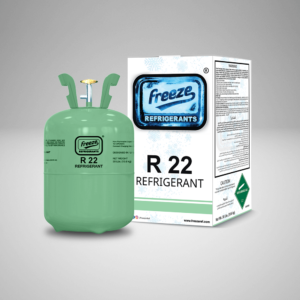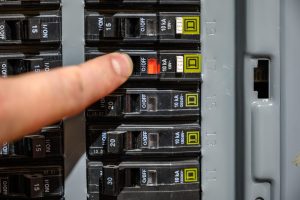The Ultimate Guide to Indoor Dryer Vents:
Definition, Installation, and Safety
Dryer vents are a vital part of any home laundry system. The indoor dryer vent is an often overlooked, yet incredibly important, component. Having a properly functioning indoor dryer vent ensures your clothes dry efficiently, while keeping your home safe from potential hazards.
Why does this matter? When your clothes dryer operates, it creates a lot of heat. That heat, if not properly vented, can lead to problems. An indoor dryer vent helps to control and redirect this heat safely.
But that’s not all. Indoor dryer vents also catch lint, a common byproduct of drying clothes. Without a vent, lint can accumulate, creating a fire risk. A well-maintained indoor dryer vent can prevent this risk, making your home safer.
In this post, you’ll learn all about indoor dryer vents. From how they work, to why they’re important, and even how to maintain them. So, let’s dive in and uncover the truth about indoor dryer vents.
What is an Indoor Dryer Vent?
Definition and Purpose
When it comes to doing laundry, having a functional and efficient dryer is essential. One important component of a dryer system is the vent, which helps to expel hot air and moisture from the machine. In traditional setups, dryer vents are installed on the exterior of a home, allowing the hot air to escape into the outdoor environment. However, in certain situations, such as apartments or homes without access to outdoor venting, an indoor dryer vent can be a viable alternative.
An indoor dryer vent is a device designed to redirect the hot air and moisture generated by a dryer into the interior of a home, rather than expelling it outside. This setup allows individuals living in spaces without outdoor access to still enjoy the benefits of a dryer without the need for complex installations or modifications to their living environment.
How Does an Indoor Dryer Vent Work?
An indoor dryer vent operates through a simple yet effective process. It consists of a flexible hose or duct connected to the dryer’s exhaust outlet and a container or filter designed to capture lint and moisture. Here’s a breakdown of how it works:
- Connecting the hose: The flexible hose is attached to the dryer’s exhaust outlet, securely fastening it to ensure a proper connection. This hose serves as the conduit for the hot air and moisture to travel through.
- Routing the hose: Once connected, the hose is routed towards the indoor venting area, such as a window, door, or wall vent kit. Ensure that the hose is properly secured and doesn’t kink or twist, as this can hinder airflow.
- Capturing lint and moisture: At the end of the hose, an indoor venting container or filter is positioned to capture lint and moisture. This container should be regularly cleaned or emptied to maintain optimal airflow and prevent potential issues.
- Releasing the air: As the dryer operates, it expels hot air and moisture through the hose, which is then directed into the indoor venting container or filter. This setup allows the air to circulate inside the home, preventing excessive humidity and maintaining a comfortable indoor environment.
- Monitoring and maintenance: It’s essential to regularly monitor the indoor venting system to ensure it remains free from blockages and obstructions. Regular maintenance, including cleaning the lint filter and inspecting the hose for any signs of damage, will help ensure the system continues to function efficiently.
Pros and Cons of Using an Indoor Dryer Vent
Advantages of Using an Indoor Dryer Vent
- No external venting required: One of the primary advantages of using an indoor dryer vent is that it eliminates the need for external venting. This can be particularly beneficial for those living in apartments or condos where outdoor venting may not be feasible. It allows you to enjoy the convenience of a dryer without the need for complicated installation or modifications to your living space.
- Energy efficiency: Indoor dryer vents often consist of a filtration system that captures lint and moisture. This not only helps to prevent lint buildup in your home but also recirculates warm air, which can contribute to energy efficiency. By recycling the heat produced by your dryer, an indoor vent can help reduce energy consumption and potentially lower utility bills.
- Protection against weather elements: Another advantage of using an indoor dryer vent is that it provides protection against external weather elements. In regions with harsh winters or frequent rain, having an indoor vent ensures that you can dry your clothes regardless of the weather conditions outside. It offers convenience and peace of mind, knowing that you won’t have to rely on the weather forecast to do your laundry.
Disadvantages of Using an Indoor Dryer Vent
- Moisture and humidity: One of the main drawbacks of using an indoor dryer vent is the increased moisture and humidity it can introduce into your home. While the filtration system helps to capture lint, it may not be as effective at removing moisture. This can lead to potential issues such as mold and mildew growth if proper ventilation is not maintained. Regular cleaning and maintenance of the indoor vent system to prevent these problems.
- Lint accumulation: Although indoor dryer vents have filters to trap lint, some lint particles may still escape into your home. Over time, this can lead to lint accumulation on surfaces, furniture, and even in your HVAC system. Regular cleaning and maintenance of the vent and surrounding areas are necessary to prevent fire hazards and maintain indoor air quality.
- Limited capacity: Indoor dryer vents typically have a smaller capacity compared to outdoor vents. This means that they may not be suitable for large loads of laundry or heavy-duty drying. If you have a large household or frequently need to dry bulky items, an indoor vent may not provide the efficiency and performance you require.
Types of Indoor Dryer Vents
When it comes to indoor dryer vents, there are several options to choose from based on your specific needs. In this section, we will explore three types of indoor dryer vents: vent buckets, vent boxes, and ventless dryers. Each option offers unique advantages and considerations, so let’s delve into the details.
Vent Buckets
Vent buckets are a popular choice for individuals seeking a cost-effective and convenient solution for indoor dryer venting. These compact devices are designed to collect lint and moisture from the dryer exhaust and can be easily attached to a standard dryer vent hose.
One of the main benefits of vent buckets is their portability. You can place them anywhere in your home, making it easy to adapt to your space constraints. Additionally, vent buckets are straightforward to install, requiring minimal effort and no special tools.
Vent Boxes
Vent boxes offer a more sophisticated solution for indoor dryer venting. These compact boxes are installed within the wall cavity and provide a secure and efficient way to redirect dryer exhaust outside the home.
The primary advantage of vent boxes is their ability to save space. By integrating the vent box into the wall, you can reclaim valuable floor space in your laundry area. Additionally, vent boxes help maintain a clean and organized appearance, as the vent hose is concealed within the wall.
When installing a vent box, follow the manufacturer’s instructions carefully. Proper installation ensures optimal performance and minimizes the risk of airflow restrictions or leaks. Regular maintenance, such as cleaning the vent box and inspecting for any blockages, is also essential to keep it functioning effectively.
Ventless Dryers
For those seeking a more innovative solution, ventless dryers are worth considering. Unlike traditional dryers that require venting to expel moist air, ventless dryers utilize condensation or heat pump technology to remove moisture from the air without the need for an external vent.
Ventless dryers offer unparalleled flexibility in terms of placement. They can be installed in any room, including areas without direct access to an exterior wall. This versatility makes them an ideal choice for apartments or homes with limited ventilation options.
However, it’s important to note that ventless dryers may require additional maintenance compared to their vented counterparts. Regular cleaning of filters, condenser units, and water reservoirs is necessary to ensure optimal performance and prevent any malfunctions.
How to Install an Indoor Dryer Vent
In this section, we will guide you through the steps of installing an indoor dryer vent. By following these simple steps, you can ensure that your dryer is properly ventilated, reducing the risk of lint buildup and improving the efficiency of your dryer.
Step 1: Gather the Necessary Tools and Materials
Before you begin the installation process, it’s essential to gather all the tools and materials you will need. Here’s a list of items you should have on hand:
- Indoor dryer vent kit (includes vent cover, hose, and clamps)
- Screwdriver
- Drill
- Measuring tape
- Pencil
- Utility knife
- Duct tape
Once you have everything ready, you can proceed to the next step.
Step 2: Locate an Ideal Spot for the Indoor Dryer Vent
The next step is to find a suitable location for your indoor dryer vent. Look for an area close to the dryer where you can easily connect the vent hose. It should also be near an exterior wall to simplify the venting process.
Once you’ve identified the spot, use a measuring tape and pencil to mark the exact position where the vent cover will be installed.
Step 3: Install the Indoor Dryer Vent
Now that you have the tools and a designated spot, it’s time to install the indoor dryer vent. Follow these steps:
- Begin by attaching the vent hose to the dryer’s exhaust port. Use clamps to secure the connection, ensuring a tight seal.
- Next, take the vent cover and align it with the previously marked spot on the wall. Use a drill to create pilot holes, then secure the cover using screws.
- Once the vent cover is securely in place, connect the other end of the vent hose to it. Use clamps to ensure a secure connection.
- Lastly, check all connections to make sure they are tight and secure. Use duct tape to reinforce any weak points, if necessary.
Congratulations! You have successfully installed the indoor dryer vent. Now you can enjoy improved ventilation and peace of mind knowing that your dryer is operating efficiently.
Remember to periodically clean the vent to remove any lint buildup and maintain optimal performance. Regular maintenance will help prevent potential fire hazards and prolong the lifespan of your dryer.
Stay tuned for the next sections of our article, where we will explore additional tips and tricks for maintaining a safe and efficient dryer system.
Note: The installation process may vary depending on the specific indoor dryer vent kit you are using. Be sure to consult the manufacturer’s instructions for any additional steps or considerations.
Safety Precautions for Using an Indoor Dryer Vent
When it comes to using an indoor dryer vent, it’s important to prioritize safety. While these vents offer convenience and flexibility, they also require proper care and attention to ensure a safe and efficient operation. In this section, we will discuss some essential safety precautions you should take when using an indoor dryer vent. By following these guidelines, you can minimize potential risks and enjoy the benefits of indoor drying without compromising safety.
Regular Cleaning and Maintenance
Regular cleaning and maintenance are required to keep your indoor dryer vent system functioning properly and prevent potential hazards. Over time, lint and debris can accumulate in the vent, obstructing airflow and increasing the risk of fire. By following these steps, you can maintain a clean and safe indoor dryer vent:
- Clean the lint trap: Emptying the lint trap after each use is essential to prevent lint buildup. This simple task ensures proper airflow and reduces the risk of overheating.
- Inspect and clean the vent hose: Regularly check the vent hose for any blockages or damage. Remove any lint or debris that may have accumulated and ensure the hose is securely connected to both the dryer and the vent outlet.
- Clean the vent outlet: Periodically clean the vent outlet to remove any lint or debris that may have accumulated over time. This step promotes proper ventilation and reduces the risk of fire.
Proper Ventilation and Airflow
Proper ventilation and airflow are essential for the safe operation of an indoor dryer vent. Inadequate airflow can lead to excessive heat buildup and increase the risk of fire. To ensure proper ventilation and airflow, consider the following precautions:
- Keep the area clear: Ensure that the area around the dryer and vent is clear of any obstructions. Avoid placing items on or near the vent hose to allow for unobstructed airflow.
- Avoid excessive vent length: Keep the vent hose as short and straight as possible. Lengthy and convoluted vent hoses can restrict airflow and increase the risk of lint buildup.
- Check for proper ventilation: Regularly check the vent outlet to ensure that air is freely flowing. If you notice weak airflow or no airflow at all, it may indicate a blockage that needs to be addressed immediately.
Fire Safety Measures
Fire safety should be a top priority when using an indoor dryer vent. Lint, which is highly flammable, can accumulate in the vent system and become a potential fire hazard. Follow these fire safety measures to minimize the risk of fire:
- Install a smoke alarm: Make sure you have a working smoke alarm installed near your dryer area. This will provide an early warning in case of a fire and allow you to take prompt action.
- Never leave the dryer unattended: Avoid leaving the dryer running while you are away from home or asleep. It’s essential to be present and attentive in case of any malfunction or potential fire hazards.
- Clean the entire vent system annually: While regular cleaning is important, it’s also necessary to have a professional inspection and thorough cleaning of the entire vent system at least once a year. This will help remove any accumulated lint that cannot be accessed through regular maintenance.
Taking these safety precautions will help ensure the safe and efficient operation of your indoor dryer vent. By prioritizing regular cleaning and maintenance, promoting proper ventilation and airflow, and implementing fire safety measures, you can enjoy the convenience of indoor drying without compromising on safety. Stay tuned for more informative sections on indoor dryer vents!
Alternatives to Indoor Dryer Vents
When it comes to drying your clothes, having a properly functioning dryer vent is essential. While indoor dryer vents are a popular choice for those who don’t have access to outdoor venting, there are alternative options that can provide even better results. In this section, we will explore two alternatives to indoor dryer vents: outdoor dryer vents and ventless dryers.
Outdoor Dryer Vents
One of the most common and effective alternatives to indoor dryer vents is the outdoor dryer vent. As the name suggests, this type of venting system allows the hot air and moisture from your dryer to be expelled outside your home. By venting your dryer outdoors, you can prevent the buildup of excess humidity and reduce the risk of mold and mildew growth in your living space.
Outdoor dryer vents typically consist of a vent hood installed on an exterior wall of your home. This vent hood is designed to allow the hot air and moisture to escape while preventing pests, debris, and inclement weather from entering the vent. It is important to ensure that the outdoor vent is properly installed and regularly maintained to maximize its efficiency and prevent any potential issues.
Ventless Dryers
Another alternative to indoor dryer vents is the use of ventless dryers. These innovative appliances eliminate the need for a traditional venting system by employing advanced technologies to dry your clothes. Ventless dryers are particularly popular in small living spaces or apartments where installing outdoor venting may not be feasible.
Ventless dryers work by condensing the moisture from your clothes into water and collecting it in a reservoir or draining it directly into a sink or drain pipe. This eliminates the need for venting the hot air outside, making ventless dryers a convenient option for those seeking an alternative to traditional vented dryers.
It is worth noting that ventless dryers may require more time to dry your clothes compared to vented dryers. However, they still offer efficient drying capabilities while offering the flexibility of installation in various locations within your home.
In conclusion, when indoor dryer venting is not an option, outdoor dryer vents and ventless dryers provide viable alternatives. Outdoor dryer vents allow for the proper expulsion of hot air and moisture, reducing the risk of mold and mildew. Ventless dryers, on the other hand, eliminate the need for venting altogether, making them suitable for spaces where outdoor venting is not possible. Consider your specific needs and constraints when choosing the best alternative for your drying needs.
Conclusion
In conclusion, an indoor dryer vent can be a practical solution for those who are unable to install a traditional outdoor venting system. It allows for the efficient and safe removal of moisture from your dryer, preventing potential hazards such as mold growth and fire hazards. By redirecting the hot air and lint indoors, you can effectively capture and filter these particles, ensuring a cleaner and healthier living environment.
However, it’s essential to choose a high-quality indoor dryer vent kit that is specifically designed for this purpose. Look for features such as a built-in lint trap and a durable construction to ensure optimal performance and longevity. Regular maintenance, including cleaning the vent and lint trap, prevent any potential blockages and maintain the efficiency of your dryer.
While an indoor dryer vent can offer convenience and flexibility, it’s important to note that it may not be suitable for all situations. Before opting for this alternative, consider consulting with a professional or researching local building codes to ensure compliance and safety.
In summary, an indoor dryer vent can be a viable option for those seeking an alternative to outdoor venting systems. Remember to choose a high-quality vent kit and perform regular maintenance to ensure optimal performance and safety.









